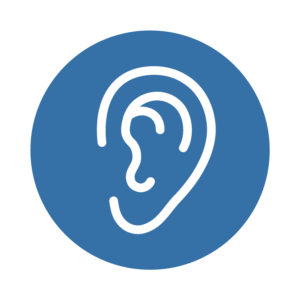
Not all students learn the same way. Some students need to hear it, some students need to see it, and some students need to do it.
Most students show a preference for one of the three basic learning styles: auditory, visual, and kinesthetic. When teachers understand the characteristics of different learning styles and associated instructional strategies, they are better able to address the learning needs of each of their students. This is an important part of creating meaningful classroom experiences and helping students retain what they learn. It is important to remain flexible with how you deliver each lesson. Creating a teaching style that incorporates various types of learning styles ensures that students are not excluded.
If a student is having difficulty in school, you might want to explore the way the information is being presented and try a different approach. Incorporating the different learning styles into lessons might prevent the student from feeling frustrated and inadequate when they are not able to work up to their potential. Experimenting with delivering lessons to cater to students’ different learning styles may improve the student’s accomplishments and feelings of achievement.
Let’s take a look at the three learning styles to show you how to spot which learning style a student might prefer. We’ll also share some tips on how to help a student succeed based on their learning style.

Auditory Learners
Auditory learners learn best by hearing the information and speaking about it.
How to Spot Auditory Learners
- Love music
- Follow spoken directions well
- Like to hear books read aloud
How to Help Auditory Learners Thrive
If a student is an auditory learner, encourage them to say things out loud. For example, when learning to spell words, have them spell the words out loud. Have conversations with students about new concepts that they learned, or have these students repeat ideas in their own words. When they’re trying to memorize something, suggest making up a song about it. Auditory learners are also often intrigued by wordplay and language patterns.

Visual Learners
Visual learners learn best by seeing the information with imagery and visual aids.
How to Spot Visual Learners
- Like to learn on the whiteboard
- Fascinated by bright colors and motion
- Like to paint and draw
How to Help Visual Learners Thrive
If a student is a visual learner, make use of the whiteboard. Incorporate different colors on the whiteboard and organize the information in a way that helps the student understand what you are teaching. Offer charts or graphs that illustrate the concepts that you are going over. Books are also great visual tools because students can see the pictures the correspond with the words. Encourage visual learners to draw a visual representation of what they’re learning. This is great way to help them remember important information and solidify the lesson in their minds.

Kinesthetic Learners
Kinesthetic learners learn best by doing.
How to Spot Kinesthetic Learners
- Love building sets
- Take things apart and put them back together
- Struggle to sit still
How to Help Kinesthetic Learners Thrive
If a student is a kinesthetic learner, offer them things to hold in their hands when possible. Integrate physical objects such as pattern blocks, base ten blocks, and letter magnets into lessons to help these learners succeed with hands on learning. Give kinesthetic learners textured paper to write on and a variety of different sized pencils and pens to choose between. Kinesthetic learners also frequently benefit from using rhythmic motions like handclapping or finger-snapping when reading or practicing math facts. Vocabulary words are also made easier by using hand signals for words to help the student understand the meaning of the word.
We hope you will keep the three learning styles in mind while in the classroom to ensure that every student is taught in a way that will help them succeed!
Also see our blog: 7 Strategies to Improve Student Learning in the Classroom
